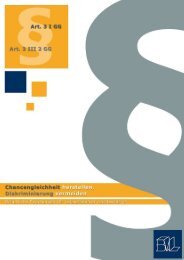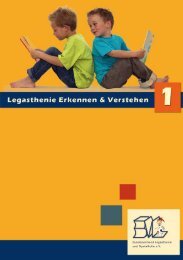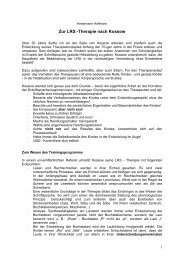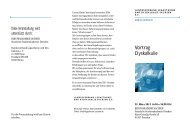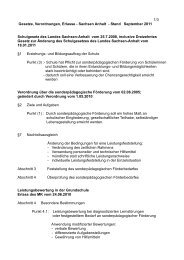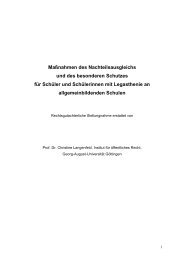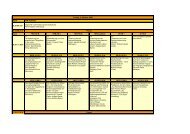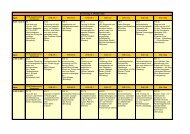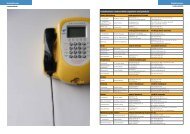Abstractband zum 16. Kongress des Bundesverbandes Legasthenie
Abstractband zum 16. Kongress des Bundesverbandes Legasthenie
Abstractband zum 16. Kongress des Bundesverbandes Legasthenie
Sie wollen auch ein ePaper? Erhöhen Sie die Reichweite Ihrer Titel.
YUMPU macht aus Druck-PDFs automatisch weboptimierte ePaper, die Google liebt.
<strong>16.</strong> <strong>Kongress</strong> <strong>des</strong> Bun<strong>des</strong>verban<strong>des</strong> <strong>Legasthenie</strong> <strong>Abstractband</strong><br />
Literatur:<br />
Jacobs, C. & Petermann, F. (2007). Training für Kinder mit Aufmerksamkeitsstörungen.<br />
Das neuropsychologische Gruppenprogramm ATTENTIONER. Göttingen: Hogrefe.<br />
Jacobs, C. Petermann, F. (2007). Aufmerksamkeitsstörungen bei Kindern. Langzeiteffekte<br />
<strong>des</strong> neuropsychologischen Gruppenprogrammes ATTENTIONER. Kindheit und<br />
Entwicklung, 16 (1), 40 – 49. Hogrefe: Göttingen.<br />
Jacobs, C. Petermann, F. (2007). Diagnostik und Therapie von Aufmerksamkeitsstörungen.<br />
Monatsschrift Kinderheilkunde, 10 , 921 – 927. Springer: Berlin.<br />
Korrespondenzautor:<br />
Claus Jacobs<br />
cjacobs@uni-bremen.de<br />
0421 2189641<br />
Phonological and extra-phonological influences on a measure of reading fluency:<br />
Evidence from dyslexic and unimpaired readers<br />
Manon W. Jones, Mateo Obregón, M. Louise Kelly, Holly P. Branigan<br />
University of Edinburgh, Scotland, UK<br />
The relationship between Rapid Automatized Naming (RAN) and reading fluency is well<br />
documented (Wolf & Bowers, 1999), but little is known about which component processes<br />
influence RAN, and why developmentally dyslexic readers have rapid-naming<br />
deficits. Researchers disagree as to whether RAN performance (and deficits) are restricted<br />
to impaired phonology or whether extra-phonological processes also play a role<br />
(e.g., Clarke, Hulme, & Snowling, 2005; Wolf & Bowers, 1999). We compared dyslexic<br />
and non-dyslexic readers on a RAN-letters task in which eye-movements were recorded<br />
and synchronized to the participants’ speech stream. Adjacent letters were either<br />
visually confusable (e.g., p-q), or phonologically confusable (onsets: e.g., k-q; rimes: b-v).<br />
These were compared to non-confusable adjacent pairs (e.g., visual: P-Q; onset: ‘k-z’;<br />
rime: ‘b-k’. We measured whether visual and phonological information in positions both<br />
preceding and succeeding a currently-named item influence processing times (uptake<br />
of information) and articulation times (production of the letter name). Results showed<br />
that non-dyslexic readers’ processing times are susceptible to visual and phonological<br />
confusability, but this is resolved by the onset of articulation. Dyslexic readers behave similarly<br />
to non-dyslexics on the processing times, but show a pervasive deficit in initiating<br />
articulation when items preceding or succeeding the currently named item contain either<br />
confusable visual or phonological-onset information. We conclude that both phonological<br />
and extra-phonological processes exert an influence on RAN performance, and the RAN<br />
deficit is characterized by multi-modal difficulty in retrieving orthographic and/or phonological<br />
co<strong>des</strong> for production.<br />
Korrespondenzautor:<br />
Manon W. Jones<br />
mjones@staffmail.ed.ac.uk<br />
61



